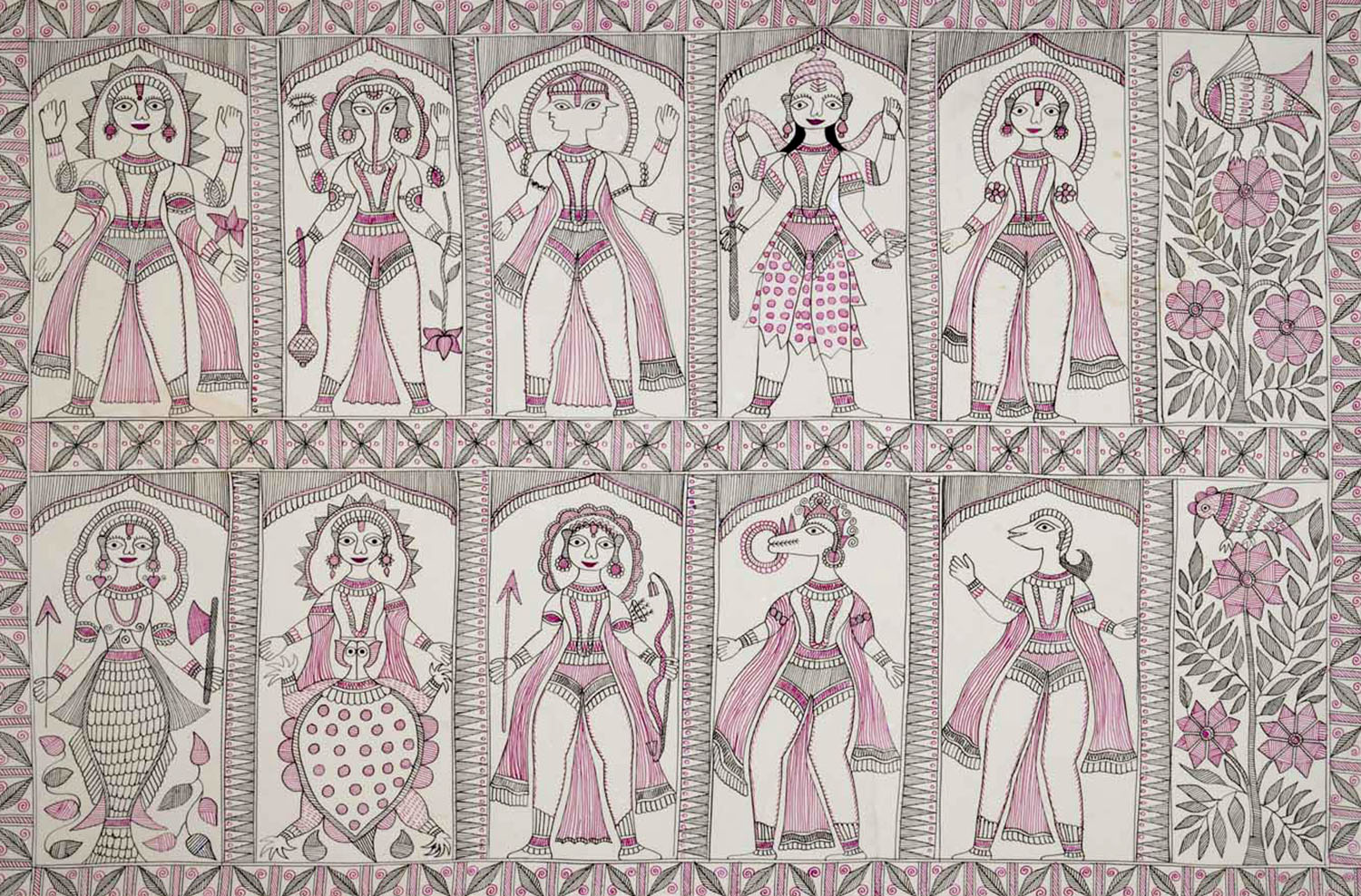ARTICLE
Mahasundari Devi
A painter trained in the Madhubani or Mithila tradition, Mahasundari Devi is generally credited with introducing its idioms and visual style into the vocabulary of modern and contemporary art in India. She is also known for her sikki work, sujani embroidery, clay work, and papier-mache.
Devi was born in a Kayastha family, in the Chatra village of the Madhubani district. From the age of twelve onwards, and under the tutelage of her aunt Devisundari Devi, she would make Madhubani drawings over the mud walls of her house, as was customary for women of her community. At seventeen, she moved to the town of Ranti after her marriage to a teacher, and continued her Madhubani mural practice. It was here that she was able to explore her artistic impulses, laying the foundation for a long career.
In 1966, Bihar was hit by a severe drought that impoverished much of the state, including parts of the Mithila region, which had been chiefly sustained by its agrarian economy. In order to provide a source of non-agricultural income to the affected communities, the Handicrafts and Handloom Exports Corporation, under the activist and writer Pupul Jayakar, developed a drought-relief programme. The officer-in-charge was the Mumbai- based painter and researcher Bhaskar Kulkarni who, along with artist-designer Upendra Maharathi, encouraged the women of the region to make their paintings on handmade paper so that their art would be marketable. It was during the course of this programme that Devi’s art was brought to the attention of Kulkarni. Following an initial period of mentorship that introduced her to new mediums that would allow for artistic mobility and that familiarised her with commercial and market concerns, Devi began to travel and exhibit her work in galleries both in India and abroad. Later in her career, she founded the cooperative society Mithila Hastashilp Kalakar Audyogki Sahyog Samiti to support Madhubani practitioners.
The themes in Devi’s paintings, rendered in the convention of traditional Mithila wall painting, range from mythology, cosmology and nature to royal court scenes and everyday social events. Gods of the Hindu pantheon such as Shiva, Rama, Durga, Lakshmi and Saraswati were especially important and featured in established mytho-religious tableaux such as Sita Swayamvar and Radha-Krishna Leela. Her style was simple and direct, with the colours applied in a flat, ungraded manner that emphasised the picture plane. Heavily patterned borders coupled with lines and crosses filled up most of the negative space — the complete utilisation of space being a major characteristic of the Madhubani tradition — and animated the picture plane.
Devi often used locally sourced and traditional art materials, such as bamboo sticks and natural dyes, to create her paintings and murals. Besides paper and canvas, she also painted on sarees and wood. She was commissioned to paint murals at the railway station at Madhubani as well as the Jayanti Janta Express train. As a teacher and facilitator, she trained a generation of artists from her family, including her daughters-in-law Vibha Das, Abha Das and Runa Das. Her granddaughter Pushpa Kumari continues to work in the medium.
Devi was the recipient of numerous awards in the course of her career. The state government of Madhya Pradesh awarded her with the Tulsi Samman in 1996 and the Shilp Guru in 2007. The Government of India felicitated her with the National Award in 1982 and the Padma Shri in 2011. She was invited to Japan to produce work for the Mithila Museum, Tokamachi, by its founder and director Tokio Hasegawa. Devi’s paintings form part of public and private collections housed at various institutions such as the National Museum, New Delhi, National Crafts Museum & Hastkala Academy, New Delhi, and the Asian Art Museum, San Francisco. In recognition of her extraordinary contribution to Indian art, Devi was given a state cremation with full honours.
Devi passed away in Madhubani in 2013 due to a prolonged illness.
Bibliography
Our website is currently undergoing maintenance and re-design, due to which we have had to take down some of our bibliographies. While these will be re-published shortly, you can request references for specific articles by writing to hellomapacademy@map-india.org.







